Back in late 2013 - early 2014 I wrote a series of posts on the theme 'Will you disrupt the future or optimise the past?'
Basically the posts pulled data from a number of sources to explore the question: In the race against the machine... What does the past tell us about the future of disruption?
What I have assembled here is a brief highlights package - sans the study of the Venture Capital market on shaping the future innovation
The journey began with a date stamp.
The day the Future of Business was revealed to a waiting world. The Douglas Englebart demo.
The year? 1968
The observation being our networked future was invented by our Grandfathers. And yes, 1968 to 2013 is a long time for the fastest growing consumer technology in history to gestate.
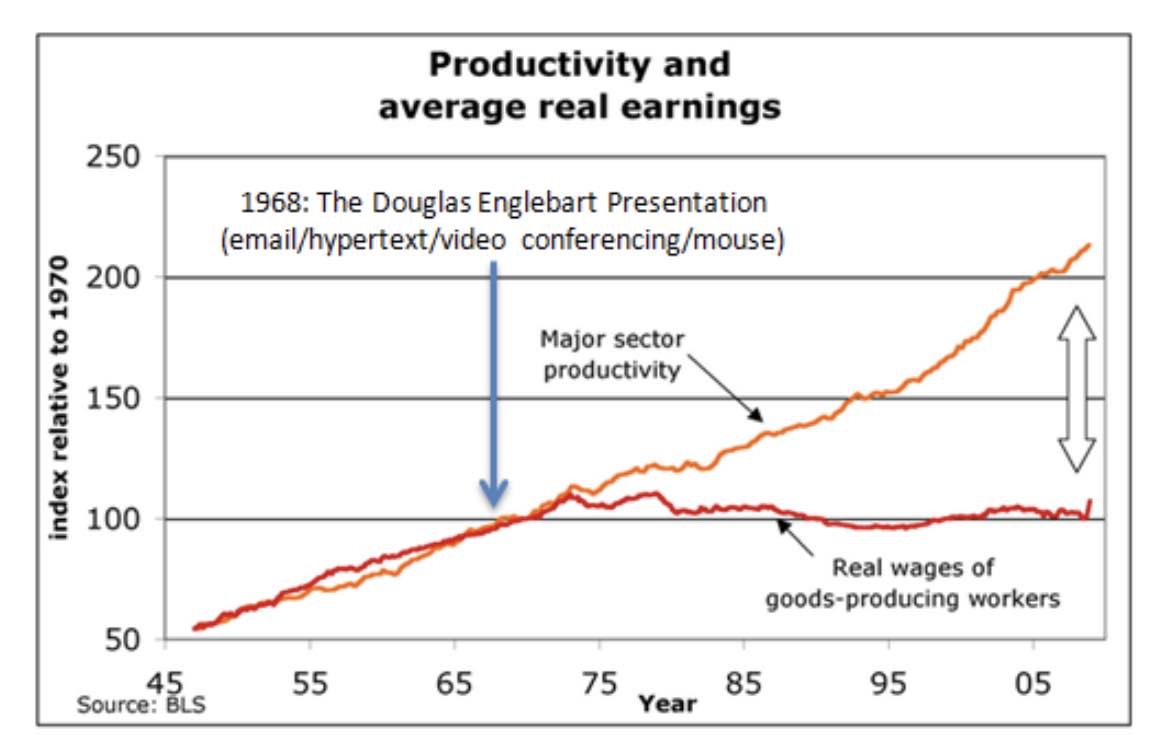
As you can see things started to happen within a decade of the Englebart demo. Productivity continued to increase but real wages stagnated. Companies started doing more with less.
But the interesting thing is what happened when the Internet came along.
Companies started doing a lot more with less. Twice as much more in fact.
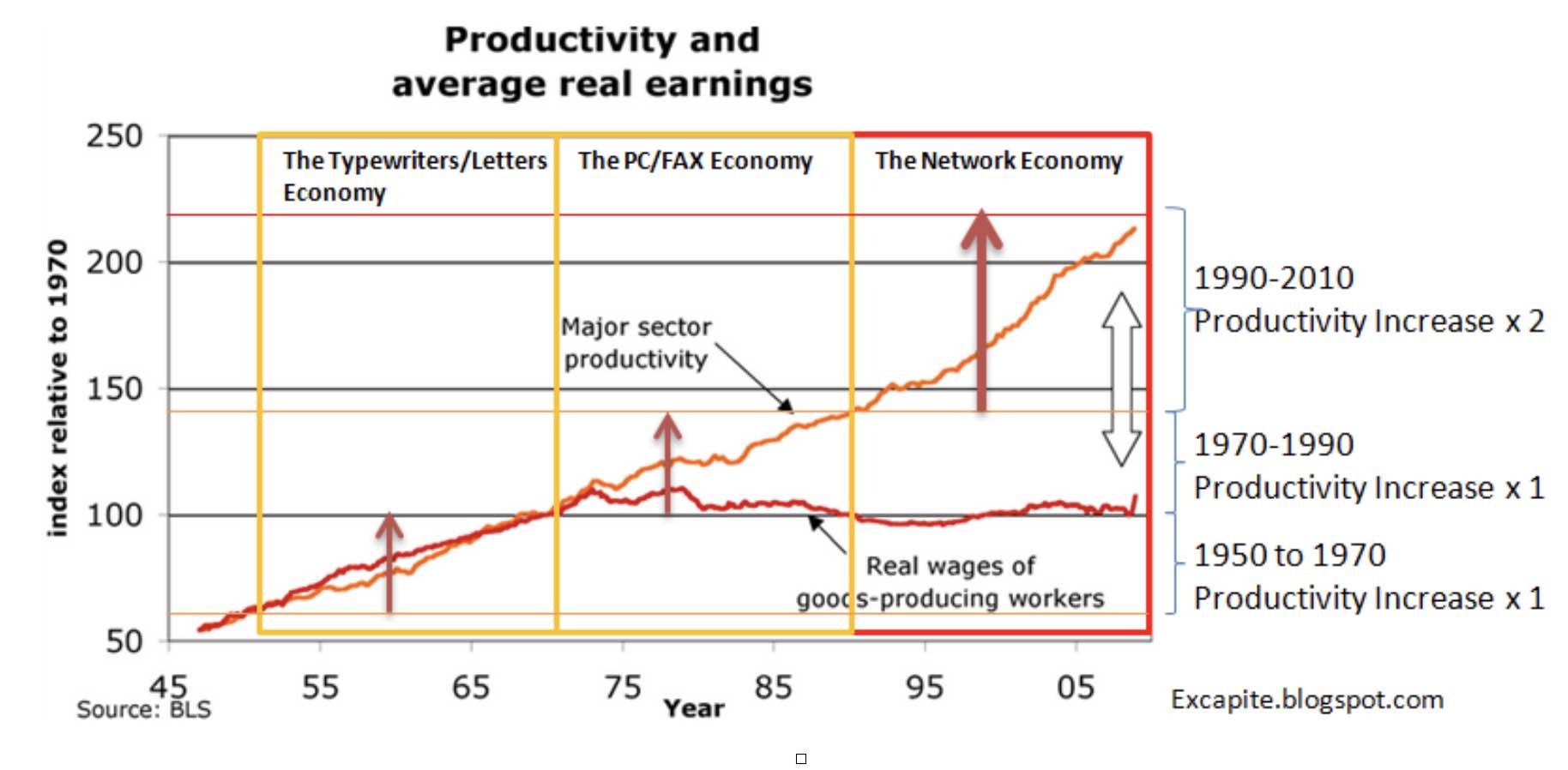
The most obvious rationalisation being this growth was a function of the technology. Hence the race against the machines.
The rationalisation that more could be achieved with the same number of workers is self evident. This explains the period 1970-1990. No growth in wages but a continuation of the upward trend in productivity. But this alone does not explain the increased growth achieved during the networked economy. Unless of course you buy into Metcalfe's Law. Connect the nodes (i.e. the machines) and things start to happen. But the problem here is 2x doesn't equate to the ^2 expounded in the theory.
We are not seeing exponential growth in productivity. If we were we'd be well on the way to the promised land. Forget the competition. Show me the leisure economy. The Garden of Eden recreated, if not reclaimed.
So let's take a look at the rise of prosumption to see if we can find the answer in Free. Or, more accurately what happens when companies invite their customers to let their fingers do the working.
As we discovered much earlier in the year the prosumption revolution isn't happening now. It has already happened. It happened before the Dot Com crash. It happened before the Web and Mobile became mainstream technologies. The revolution we are having today merely provides the consumer with multiple touch points to engage in the prosuming experience. We are living in the era of the prosumer fragmented. These technologies are merely the enabler, rather than the driver, of the experience.
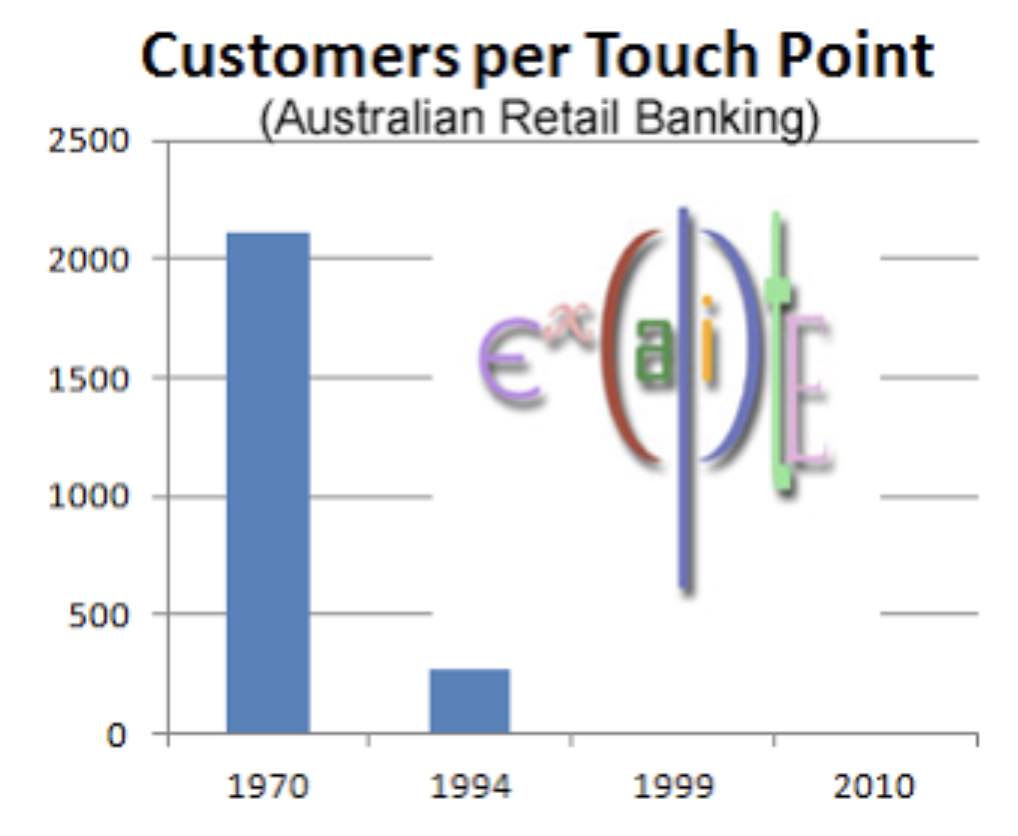
In this context the stagnation of real wages is a function of the technology augmented prosumer. Not so much a race against the machines. More a race against the machine augmented prosumer. But does the fragmentation of the prosumer experience account for a 2x increase in productivity during the network era? I wonder?
So on to the rise of the Asian Tigers. What does the machine augmented network supply chain have to tell us about the growth in productivity?
Here is the US balance of trade figures (cumulative) mapped against the rise in productivity.

As you can see the growth in the trade deficit clearly suggests the extra productivity gain is more likely a function of the future being invented elsewhere rather than any productivity gains achieved by empowering US customers to prosume with the assistance of machines.
The economic wonder of the network economy is more a function of the US markets being connected to the rest of the world rather than any seismic shift in the US technology landscape. Outsource the costs. In-source the margin. Plan for the next product cycle. Pump up the narrative and cash in on the latest fashion. Designed here. Manufactured elsewhere.
The next logical step being American consumers prosume directly with their international suppliers rather than through high margin low cost supply chain managers (i.e. popular designer brands). Fragmentation of the supply chain or what will be better understood retrospectively as the battle of the network as database.
This will deliver stagnation in real wages and, who knows, productivity gains of 4x over the next 20 years?
But it goes some way to explain how, after landing on the moon, yes the very day the universe changed, our ideas about the economic value of the productive poor were disrupted. Productivity was outsourced. Not only to the developing world, but also to the customer. The customer became, somewhat paradoxically, the new poor.
In the end though, perhaps the most telling indicator of the impact of US productivity being a function of the future being invented elsewhere is this mash-up of the impact of creative destruction on the Fortune 500. Data courtesy of this excellent paper: A short history of creative destruction as mapped by the turn over in the Fortune 500 since the mid 1950's.
In this first chart illustrates how the impact of creative destruction on the leading market index came late in the PC/Fax era and early in the network era.
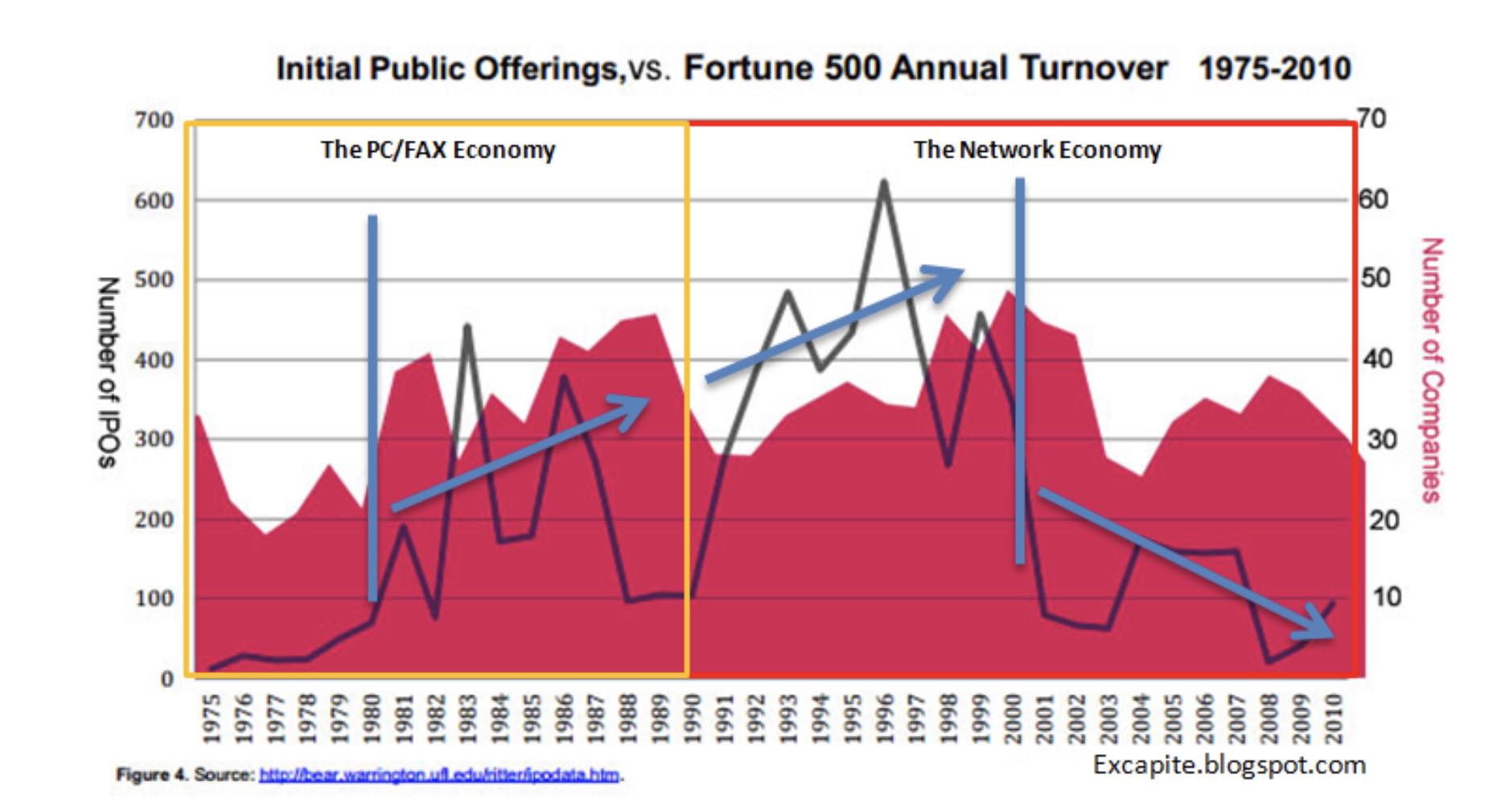
Suggesting the era of creative destruction was a single period stretching from 1980 to 2000
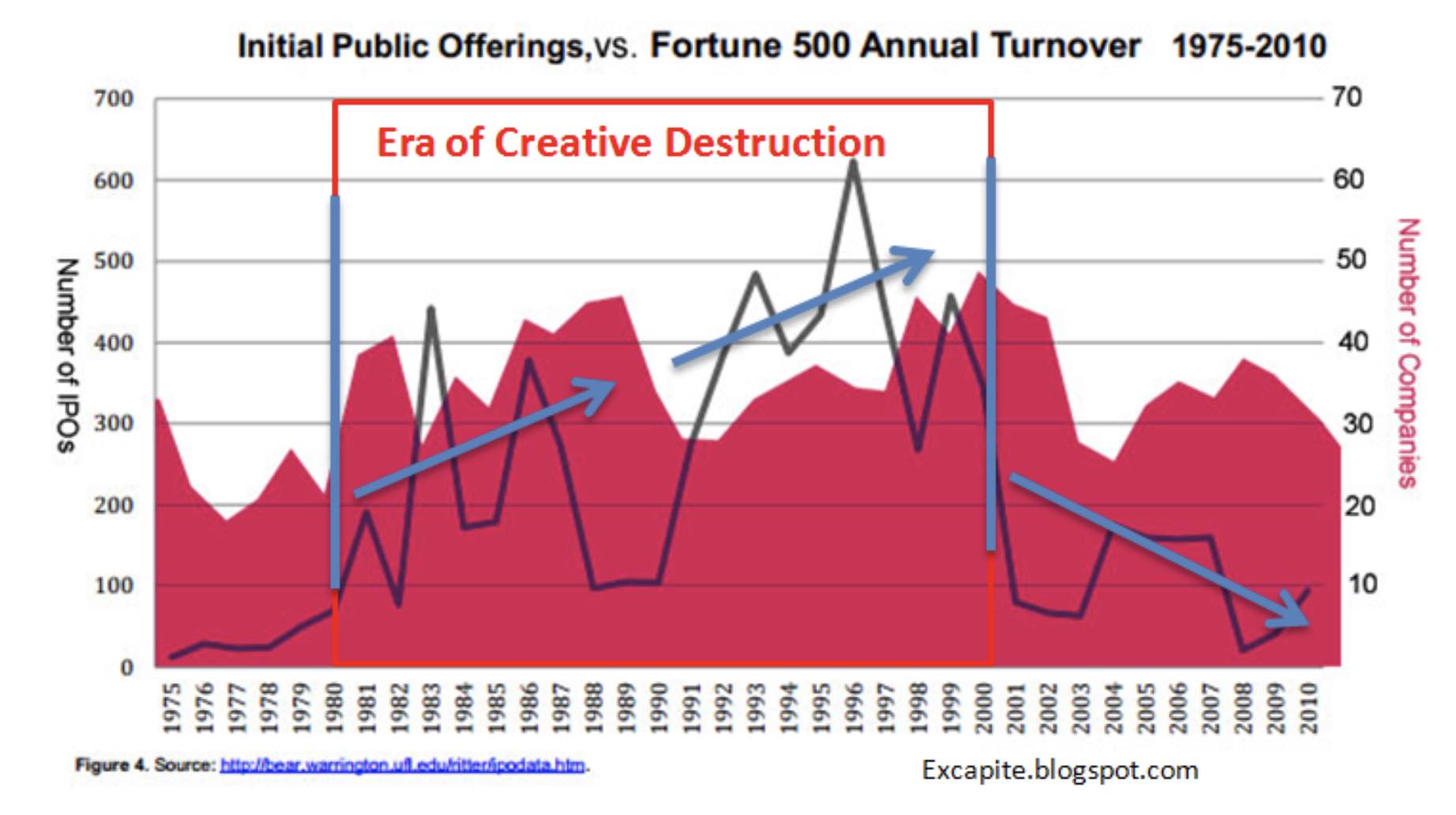
Or, more accurately 1980 to 1996. The year we have previously described as the year innovation in Silicon Valley stalled.
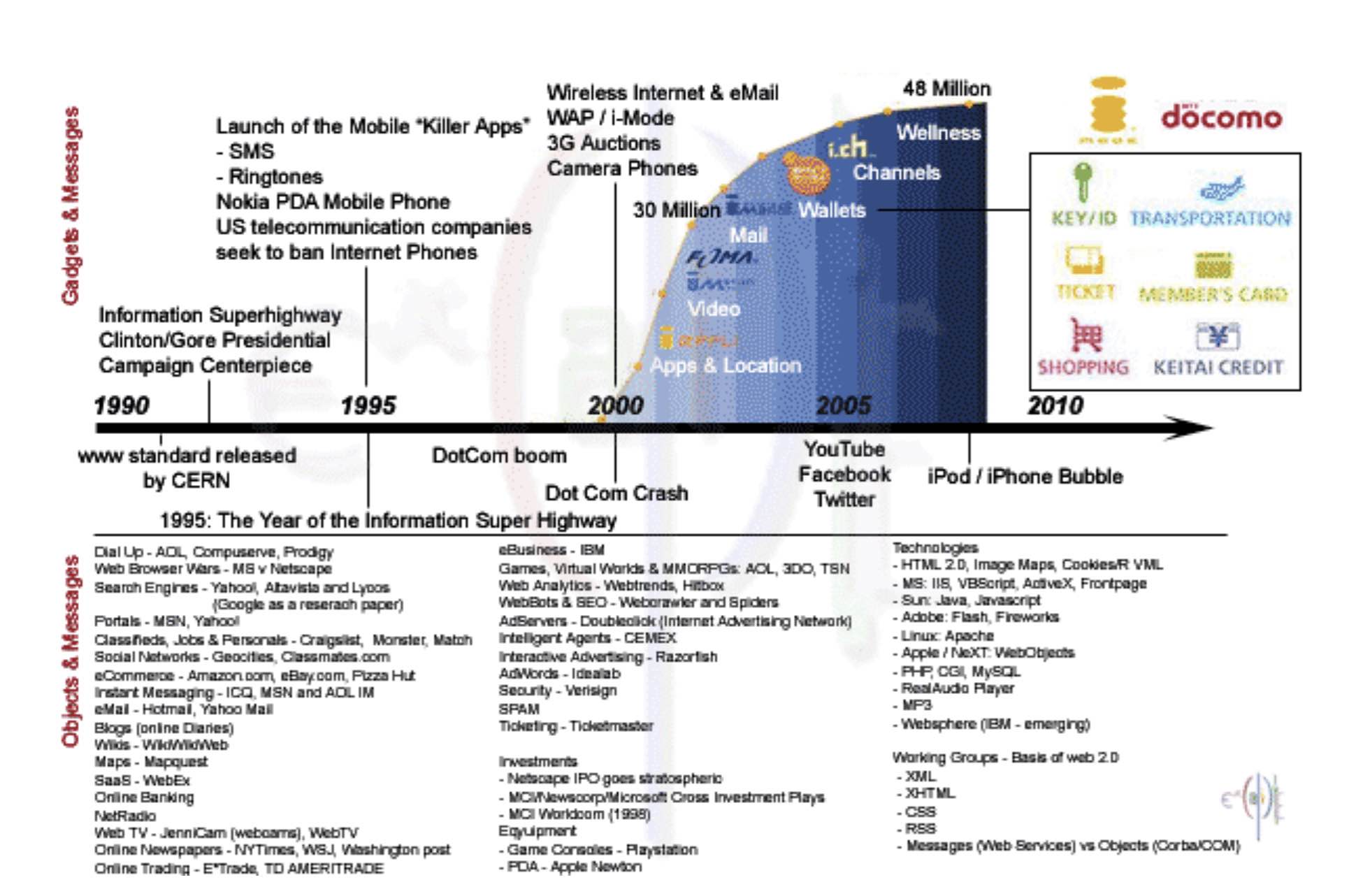
and we see this reality reflected in the post 1995 cohort venture capital returns
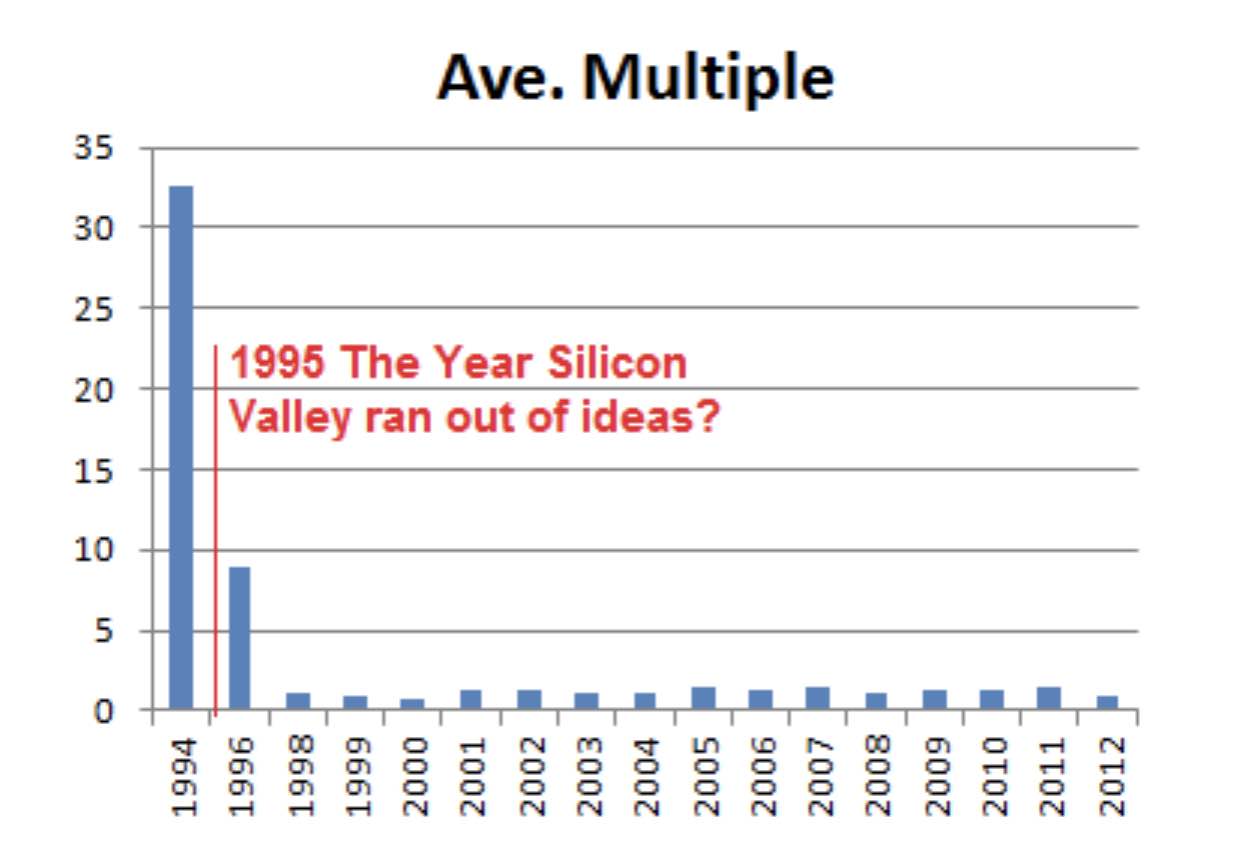
Now I want to dig a little deeper. Expose a little of the granularity buried in the Fortune 500 data. But I don't have all day. So I'll limit it to the Top 100 spots on the list
Here is a chart mapping the changes from 1955, through the era of creative destruction, and up until 2010
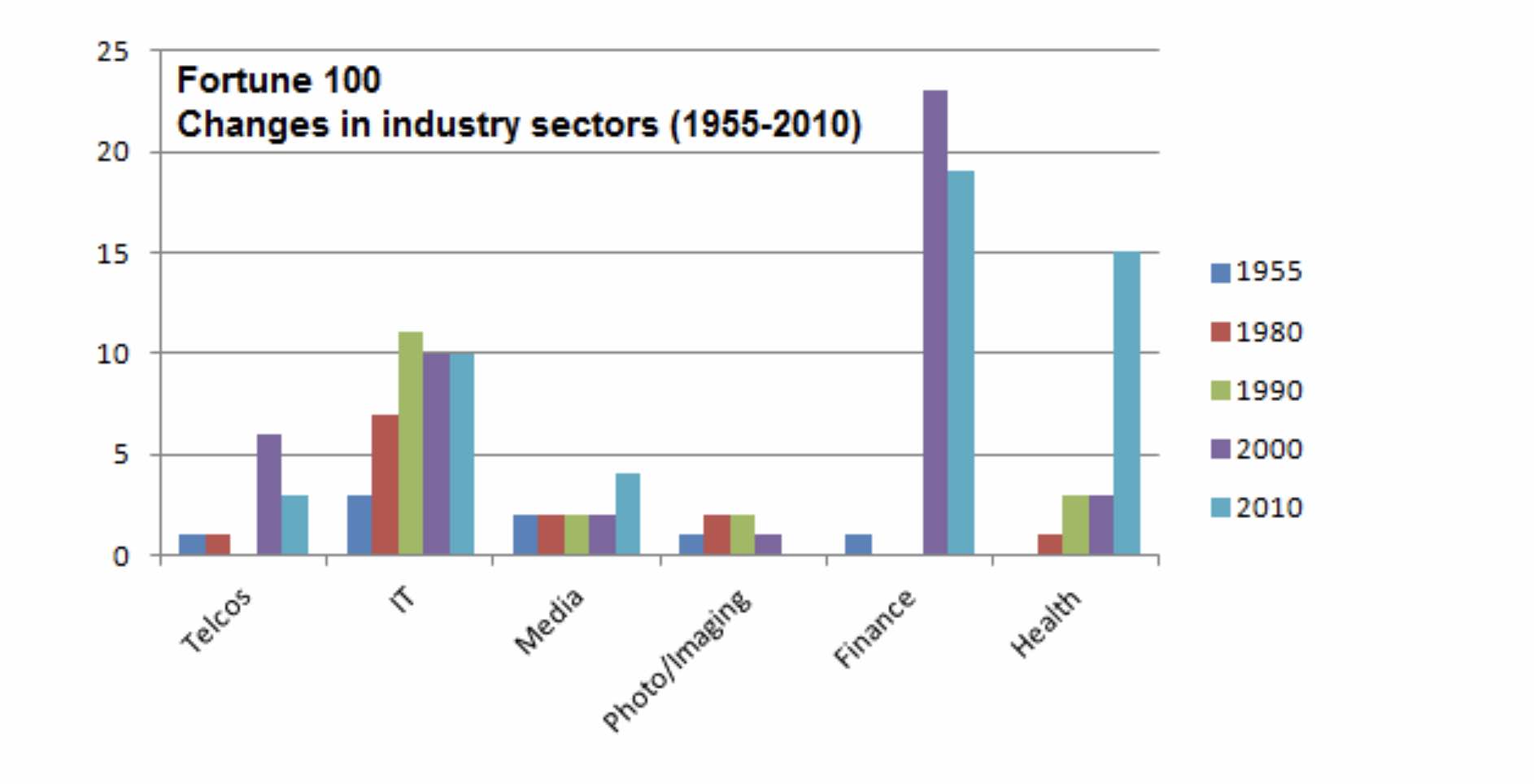
Tell me. What do you see?
Do you see that this technology, this great mobcon we call the networked economy, is simply disrupting, not the future, but itself? Has been for decades. And that the core of the great disruption has happened, and continues to happen, elsewhere. Initially in financial services. The future of money. And now health.
The reason why? A very simple one. Demographics.
Bankers dream of Baby Boomer pension plans and health care. These are the battle grounds of the great disruption. Disrupting paper is merely the distraction. The excuse to forget about the unlimited potential of tomorrow
Dig deeper and we also discover, somewhat paradoxically, all this investment in the future has resulted in the optimisation of the past
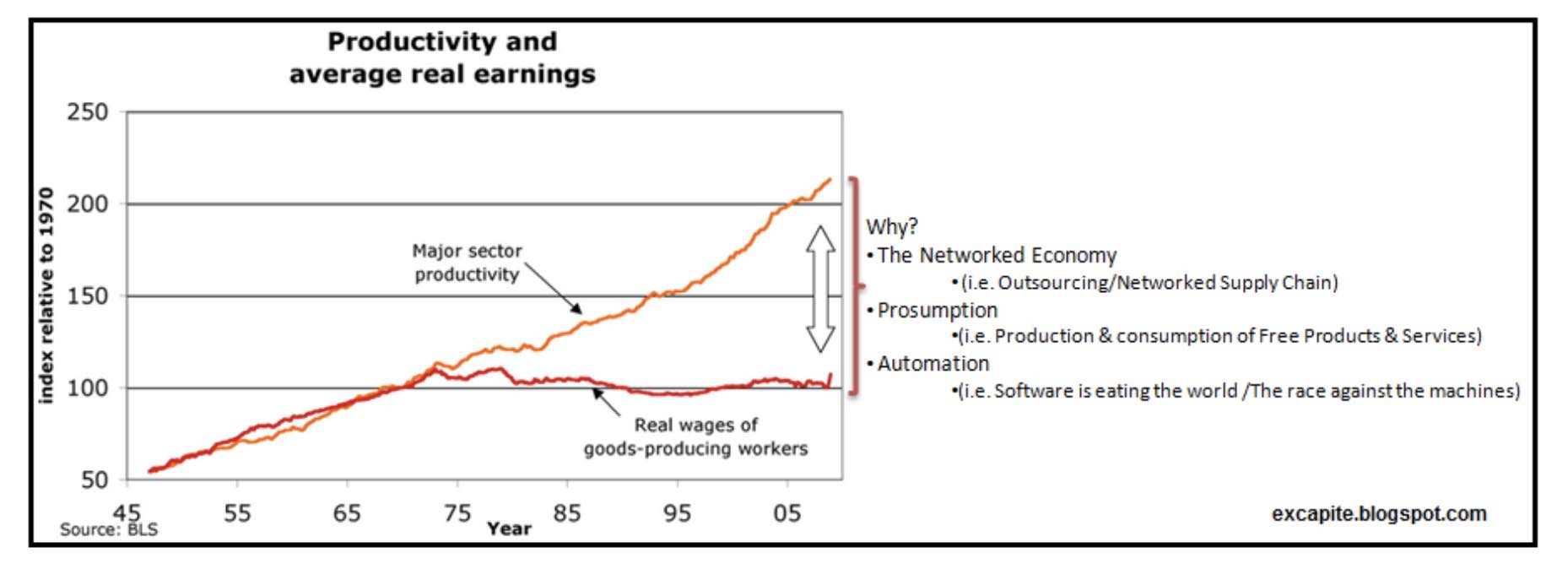
And although it would appear self evident that it is a result of software eating the world a closer inspection reveals that, if anything, software is apparently busy eating itself
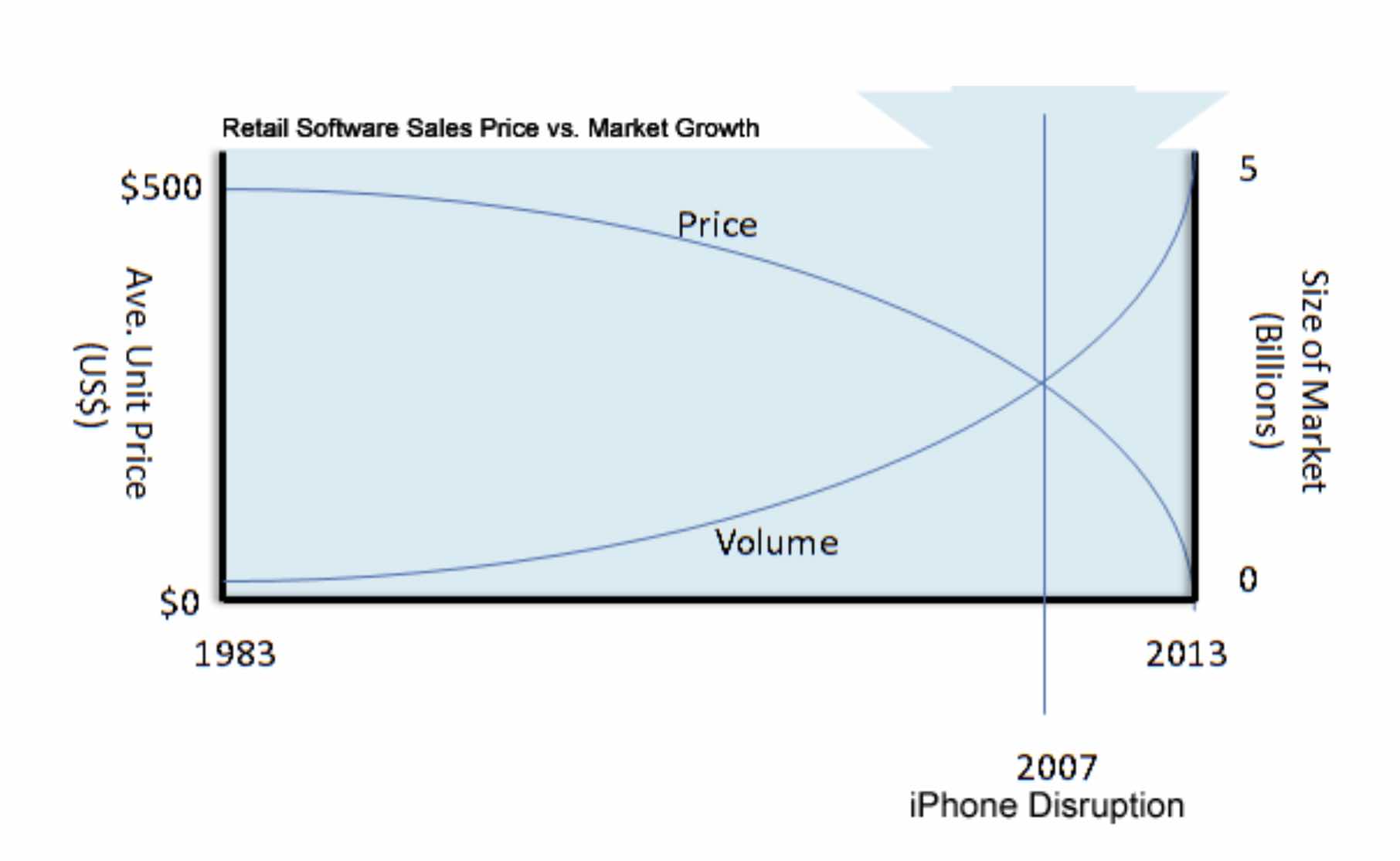
Meanwhile... the only real innovation to emerge since 1995 has been in the explosive growth in complex financial products. The very same products that created the GFC
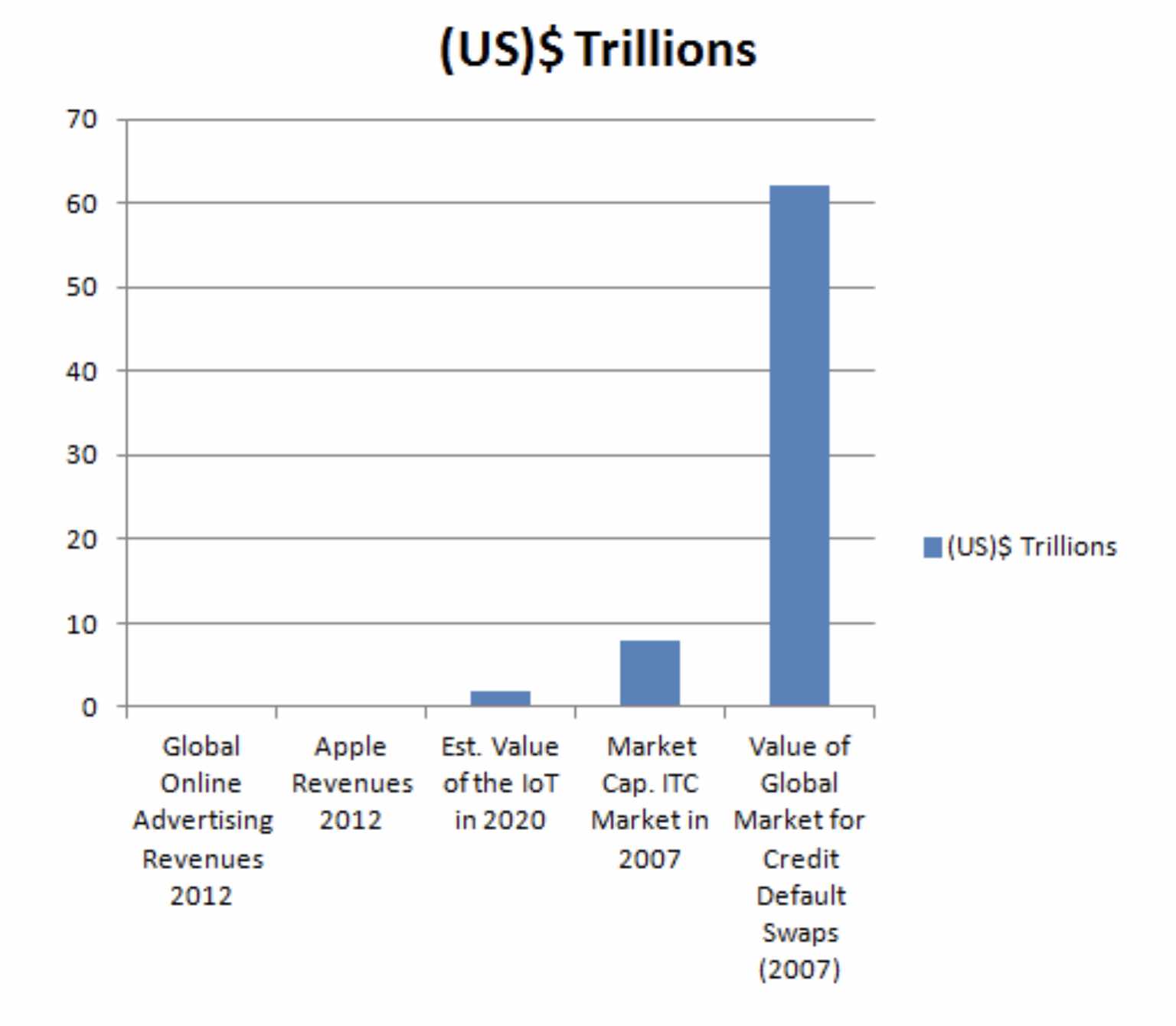
Now let's take a look at another mashup from that Kauffman reference paper A short history of creative destruction as mapped by the turn over in the Fortune 500 since the mid 1950's.
It uses the "big data" to tell a simple story. Indeed the story is so simple it hardly needs an explanation or a commentary. It states quite simply this great disruption. This most disruptive of times. This era, which is undoubtedly the most innovative in the history of mankind, is in reality, well how can I put it kindly?, a myth.
Why? because if the average time between start-up and IPO, and by IPO I mean an entrepreneur's ability to disrupt the status quo, the past, and join the global elite, is 7 years, then this post dot-com decade of disruptive innovation is on track to be the poorest performing decade in 170 years.

We live in the era of the great under-disruption. We live, as I have said many times before, in excitable times.
And shall we measure just how unexciting these times really are?
Why not. Let's begin with the PC/Fax revolution vs. the network revolution. The generation of Gates n' Jobs, the old '55's vs the disruptive era that delivered to us the Google Boys and, more recently, Zuckerberg.
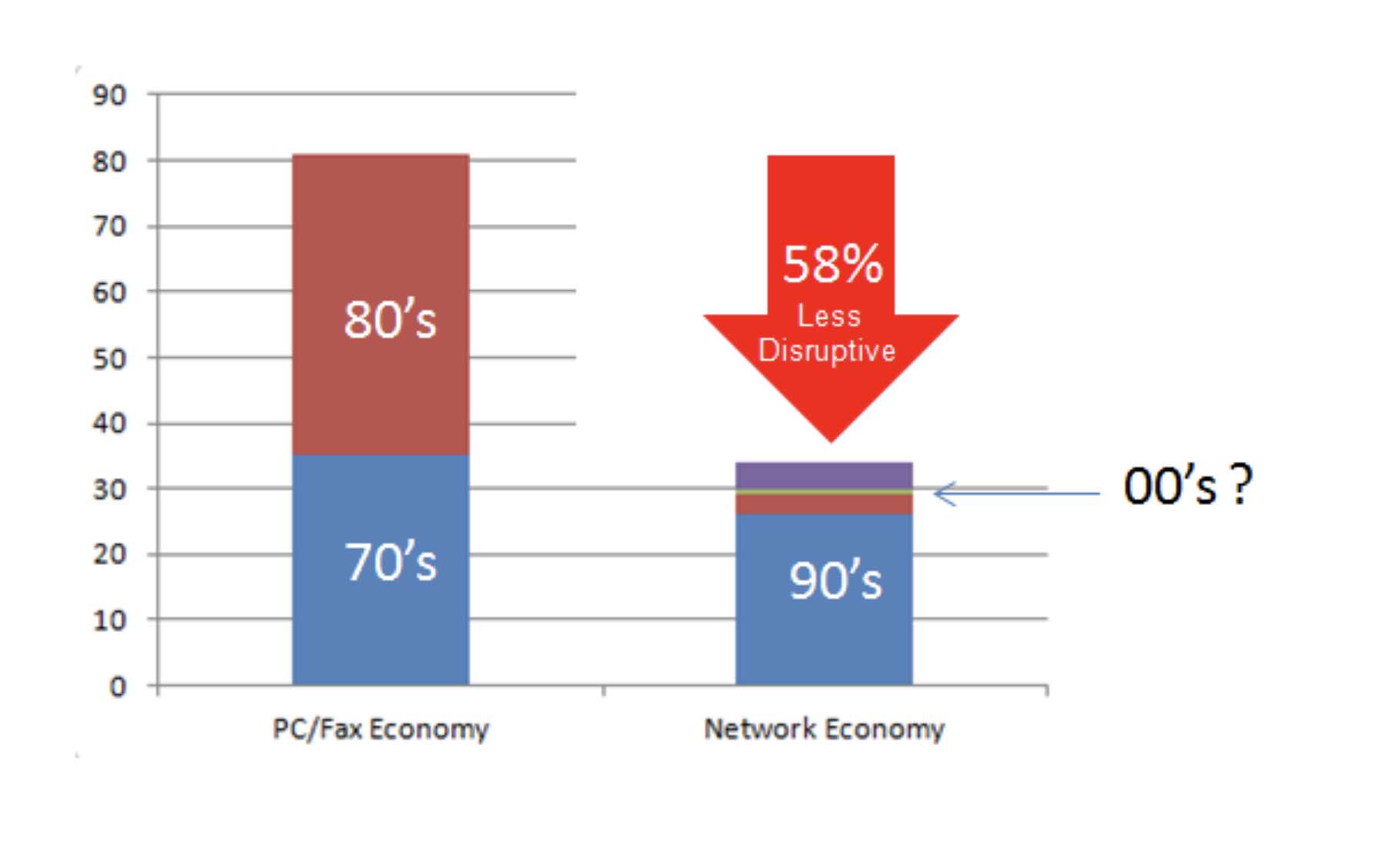
And what of our forefathers. What of the time of Edison and Ford? How do we compare with the greats America's Golden era?
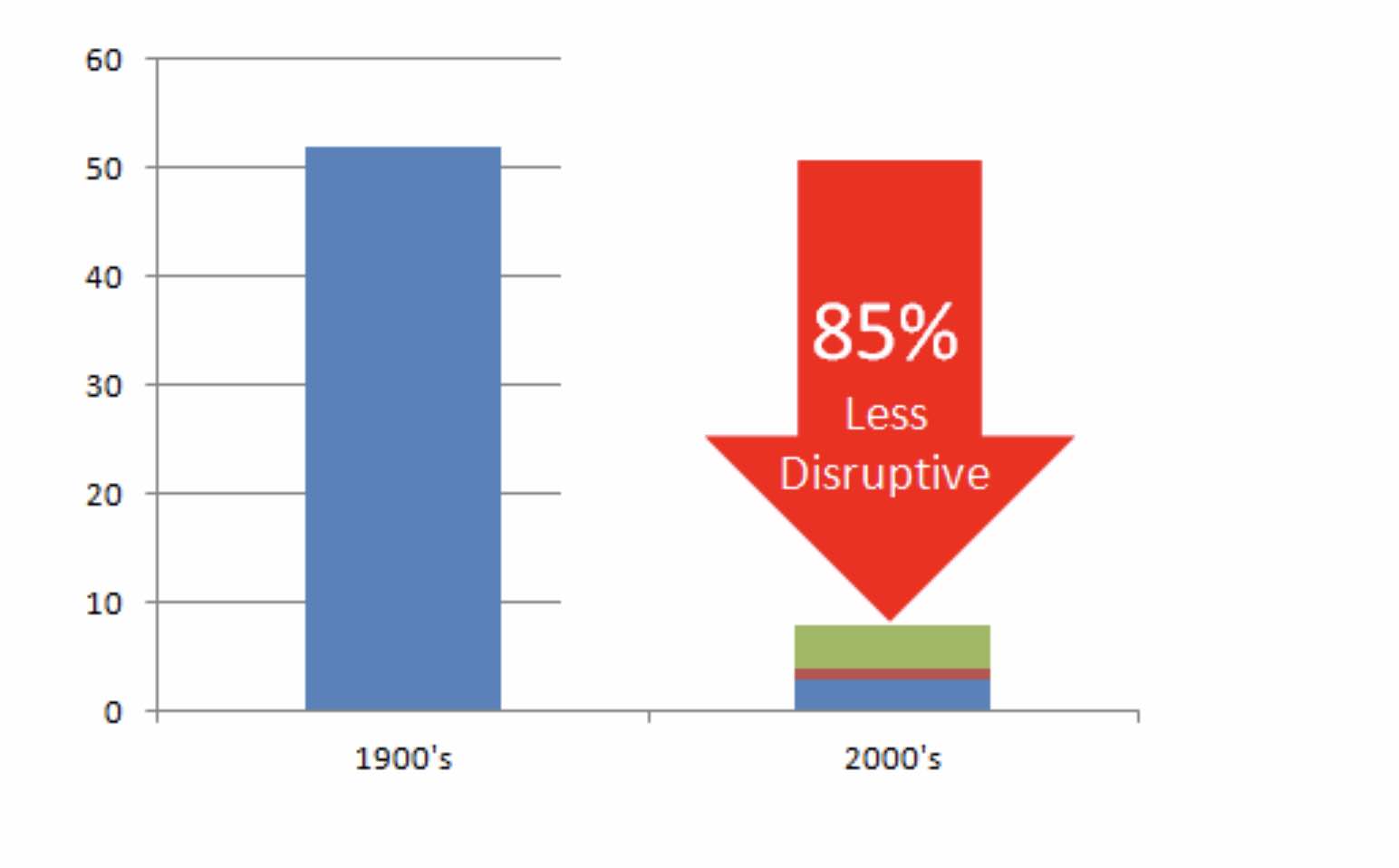
As I said. It needs no commentary. The numbers speak for themselves.
The United States stands on the cusp of a dramatic revival and rejuvenation, propelled by an amazing wave of technological innovation...
The Internet is in the very early stages of a driving an exponential economic growth curve akin to what electricity earlier wrought during the later half of the Industrial Revolution.
VIVEK WADHWA AND ALEX SALKEVER
So let's ask the question. Just how much more disruptive do we have to be going forward to make this the most disruptive decade in history? The answer, very simply is...
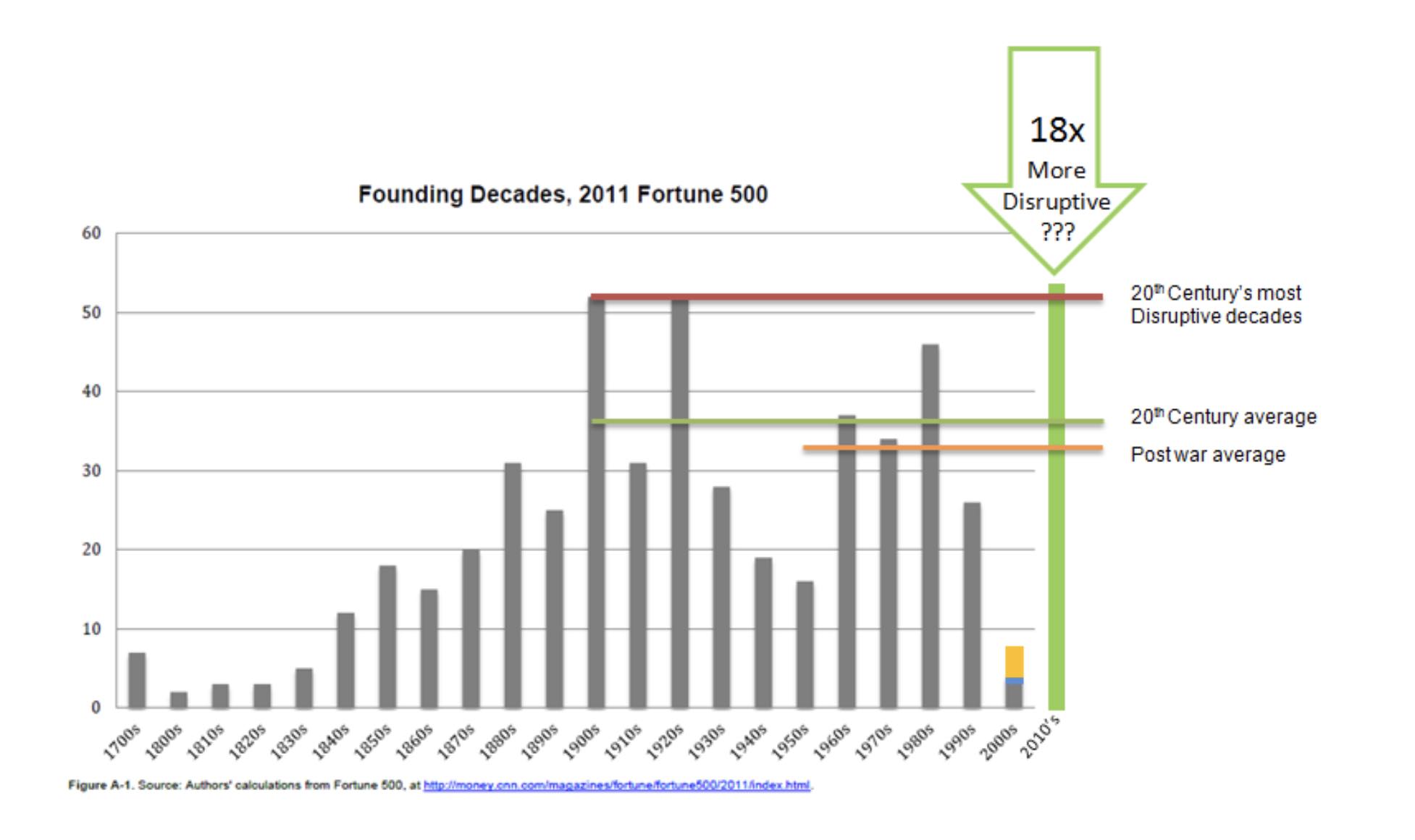
And the question must be asked: Can we put a positive spin on all this? The answer being of course we do, daily.
Every day we hear like the dawn chorus of the wondrous sunrise. The voices of futurists, the academics and the journalists squawk in good cheer. Things have never been better. We live in wondrous times. The future is being disrupted, because quite simply, we are all connected.
That's why the market caps of the IT&C sector are at all time highs. Seemingly their growth in stature is inversely proportional to the decline in disruption across the Fortune 500
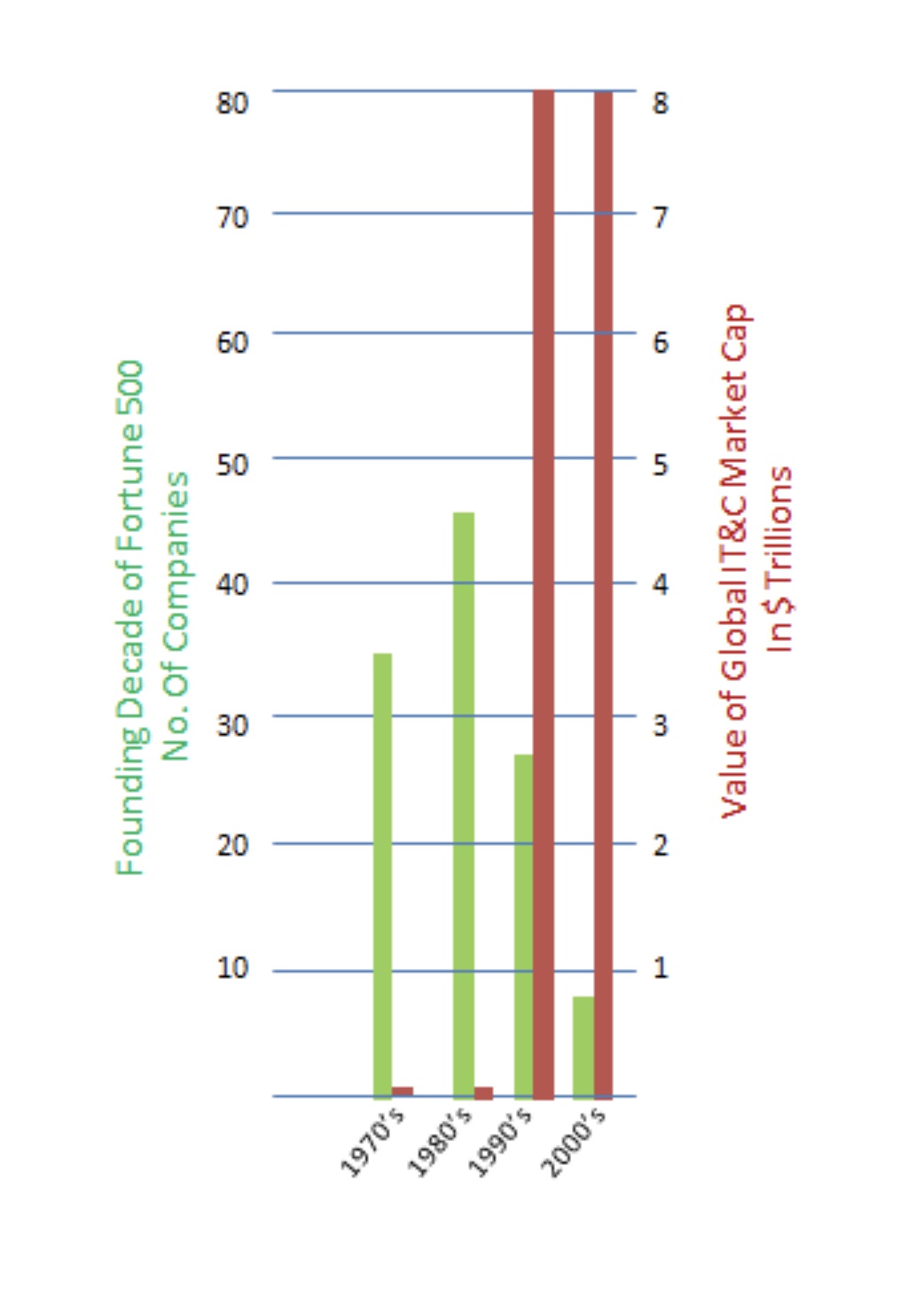
And it is the power of the narrative that holds us together. That gives us hope. It encourages to think small. And yet nobody stops to ask the simplest of questions: Could disrupting the future really be as simple as developing an app, having a Facebook page or a Twitter account, writing a blog post, carrying a smartphone or wearing a smart watch?
For surely the day will come, and history will hold us all to account, and the question will be asked, what were you doing in the decades the future of our children was lost in translation?
Lost in the deluge of big data. For in the end, seemingly in this world you are what you measure. So tell me dear reader, what are you busy measuring today?
For that in the end is the measure of your ability to disrupt the future.
Postscript
Its been 8 years since I wrote this thread
What happen in that time?
Did anything change?
Did all this Venture Capital investment in Unicorns and Crypto change the game?
Are we living in a new golden age
In 2018 Fortune published an interactive map of the Fortune 500
It helps make things easier to navigate

You can also navigate the dataset
The headline numbers - once you strip out the demergers and spin outs - are simply this
Today the disruptive, game changing, breakout 21st Companies listed in the Fortune 500 are: Tesla, Facebook, Wayfair, Uber, Square, Chewy and Carvana
This means 21st Century companies represent just 3.5% of the Fortune 500
Basically...
The first decade of the 21st Century proved to be the least disruptive since the 1830's
Meanwhile the 2010's are on track to be the least disruptive since 1800's
So have a good think about that... until next time.